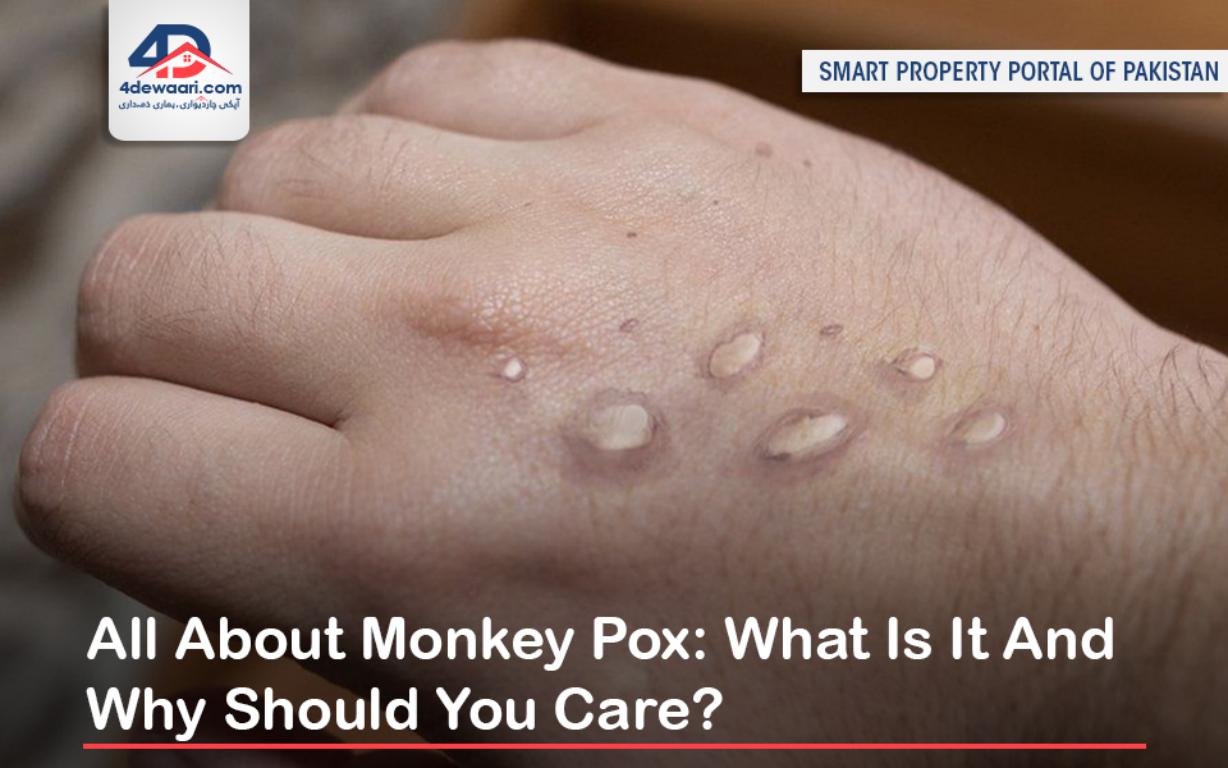When you think of pox, your mind probably goes straight to chicken pox or smallpox. However, monkeypox is a completely different disease that’s transmitted by certain types of New World monkeys. The virus causes small red pimples to appear on the skin, which are then accompanied by a fever and itching. While it may feel like something out of a monster movie, monkey pox is rarely fatal. But if overlooked, it can cause severe skin issues. Viral infections such as smallpox and monkey pox are known as pox diseases because they all share the same type of virus: the pox virus. If you’re curious to know all about monkey pox, i.e. its origin, causes, and treatment – read on!
What Is Monkey Pox?
Monkey pox is a viral disease of people, similar to smallpox but caused by a different pox virus type. A virus called monkeypox was first reported in African monkeys. It is endemic in squirrel monkeys in Central and South America also and is acquired by humans who are in frequent contact with these animals. Its incubation period is about one week and the virus is transmitted by inhalation of contaminated respiratory droplets. The disease is characterized clinically by fever and vesicular skin lesions. Monkey pox is widespread in several Central and South American nations, particularly Brazil, Colombia, Ecuador, Guatemala, and Paraguay. It has been reported in humans in the USA, Europe, Asia, and Africa, but only by people who traveled to the above-mentioned areas and were exposed to infected New World squirrel monkeys. People at high risk of infection include workers in laboratories studying monkeys, veterinarians, and people who work with these animals as a hobby.
Read Also
Ways To Keep Insects Away From Home
How Has This Outbreak Affected Humans?
Human cases of monkeypox have been traced back to a single outbreak that occurred in Nigeria, but researchers think humans may have contracted monkeypox as far back as 1973. The disease has since spread to other parts of Africa, including Gabon, Central African Republic, Democratic Republic of Congo (DRC), Cameroon, and Uganda. In 2003, a large outbreak occurred among people who had contact with infected animals at a pet store in Chicago, and there were approx 255 human cases of monkeypox reported in more than 9 states, in 2005. Most patients recovered without treatment; however, some developed severe illnesses requiring hospitalization.
How Do You Get Monkey Pox?
You can only get monkey pox from direct contact with infected New World squirrel monkeys or other animals. However, it is extremely rare for humans to contract this disease because there are very strict regulations on who can handle the animals. You can also get it by inhaling the droplets released by these animals when they sneeze or cough. Humans must have direct exposure to the animals in order to get monkey pox. This is why it’s so rare for people to get infected, as New World squirrel monkeys aren’t exactly popular pets.
All About Monkeypox: Signs & Treatments:
Signs:
The symptoms of monkeypox are less severe than of small pox. The most common symptoms include fever, headache, flue, muscle aches, backache, swollen lymph nodes, and rash. Symptoms begin anywhere from 12 to 24 days after exposure to someone who has monkeypox or from handling an infected animal. The following symptoms may also occur:
Read Also
Homemade Cleaning Remedies
Blisters on the hands and feet:
These blistering areas are usually red, purple, or black in color. They’re usually not painful and might not appear for up to two weeks after infection.
Scabs that fall off to reveal new skin underneath:
The skin will appear red, and will continue to itch for a few months.
Skin sores and lesions:
These can appear near the hands, behind the knees, in the mouth, and on the face.
Swollen glands:
These are usually found in the armpits and groin.
Treatment: How Is Monkey Pox Treated?
The good news is that, while monkey pox is a sporadic disease, it is treatable. However, there is no specific treatment yet available for this disease. If you get it, the first thing your doctor will do is confirm that you actually have the infection, which is the most important step. Following that, you will be given antiviral medications to help minimize the intensity of your symptoms. If you get the infection while in South America, you’re advised to stay in the country, as it’s almost impossible to get a visa while you have a fever. You should also avoid contact with other people and animals, as this will help to prevent the infection from spreading.
Read Also
Get Rid Of Bed Bugs at Home
What Is The Risk In Being Exposed To Monkeypox?
There is a small risk of acquiring monkeypox if exposed to someone who has it. However, no incidences of human-to-human transmission have been observed in health care organizations. People who are diagnosed with monkeypox should avoid public transportation as well as crowded places like airports, stadiums, shopping malls, and other areas where they could potentially spread the virus to others.
FAQs
How Can I Prevent Getting Monkeypox if an Outbreak Occurs Where I Live?
You can guard against this disease by taking the following safety measures:
- Stay away from that specific house or community that has monkeypox.
- Do not interact with the town's animals, especially the monkeys.
- When walking outside, cover your mouth and hands.
- When eating and drinking in public, use disposable utensils.
- Do not eat with the person who has this disease.
Do Vaccines Exist for Monkeypox?
The vaccination for monkeypox is the same as for small pox, due to comparable symptoms. However, Clinical trials are underway to produce a specific vaccine for this disease.
Conclusion
We should not underestimate Monkeypox as humans can also be infected if they inhale droplets from the infected animals’ coughs or sneezes. This post has clearly explained everything you should know about Monkeypox. If you think you have monkey pox, you should see a doctor right away to confirm the diagnosis and start treatment right away. It is critical to take steps to avoid spreading the virus to others.















